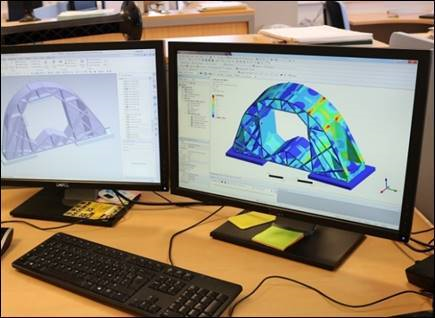The altogether too youthful Christophe Schramm has headed up Solvay’s 3D printing efforts for the past several years. He’s presided over Solvay’s market entry release of PVDF filament, as well as partnerships with Aerosint, Roboze & Stratasys. Solvay’s market entry has seen it sell filament directly via its own webshop and sparingly use resellers. It also makes materials for Desktop FDM, FDM, high-temperature FDM; with PPSU, PEEK, PVDF and Carbon PEEK as its main materials. With a high-performance portfolio mainly aimed at industrial parts and markets like aerospace, Solvay needs to keep innovating to drive growth.
Christophe says that “Solvay has now been selling products for 18 months..with Carbon PEEK and PPSU…being very successful…and sales taking off.” He’s proud of the strong Solvay team and “confident that the current approach was the right path for Solvay.” Solvay is “focussing on aerospace, oil and gas, automotive” and in these markets “applications are becoming more and more serious” and they’re “hiring a young team to serve the market.” As well as industrial manufacturing they’re seeing “more serious benchtop applications” where “3D printers are not just toys.” Christophe’s industry outlook is that, “overall the industry is moving towards prototyping, tooling, spare parts and small series..with a much more professional and industrial approach.” He believes that “the hype is now gone and now we’re seeing where the value proposition of the technology holds.”
He really believes in “partnerships with printer manufacturers” which includes “partnerships with Stratasys and also open systems.” Working with companies such as Roboze and Ultimaker brings advantages to Solvay but also the market in general. “Together with the printer manufacturer, we can bring about an optimization per platform” and account for “the right processing conditions, warpage, shrinkage, and repeatability.” As Solvay, “we can’t do all of the required testing, application, and business development work..we need the OEM’s expertise for that.” The firm does this for “its high-performance portfolio” but he’s also happy that for PVDF it can “run on Ultimaker’s installed base of over 120,000 systems” and give these users “exceptional chemical and UV performance on a proven fluoropolymer that can now be printed on accessible performance systems such as the Ultimaker S5.” The goal is still to “together with the OEM optimize compared to known performance in injection molded parts.” The “holy grail is still to match the Z-axis performance of injection molded parts.”
A Solvay Solef PVDF part
“We are a chemical company and we are now increasingly using 3D printing for our own needs and our own use cases.” Solvay is learning through using 3D printing for spare parts in its factories and day to day businesses. Christophe dances around the company developing more materials such as sintering powders and PEKKs but does state that “we have a wealth of experience in medical polymers and implantable materials” for now they have limited contact medical approval for 24 hours on a number of materials. With over 20 years of experience in implantable materials and the right facilities for it, this could be an interesting growth avenue for the firm.
Solvay “wishes to become the leading supplier of AM ready solutions.” Something like “Solvay getting into the parts business is not on the radar…rather the firm wants to get the best possible materials into the best possible AM ready form together with our partners.“
